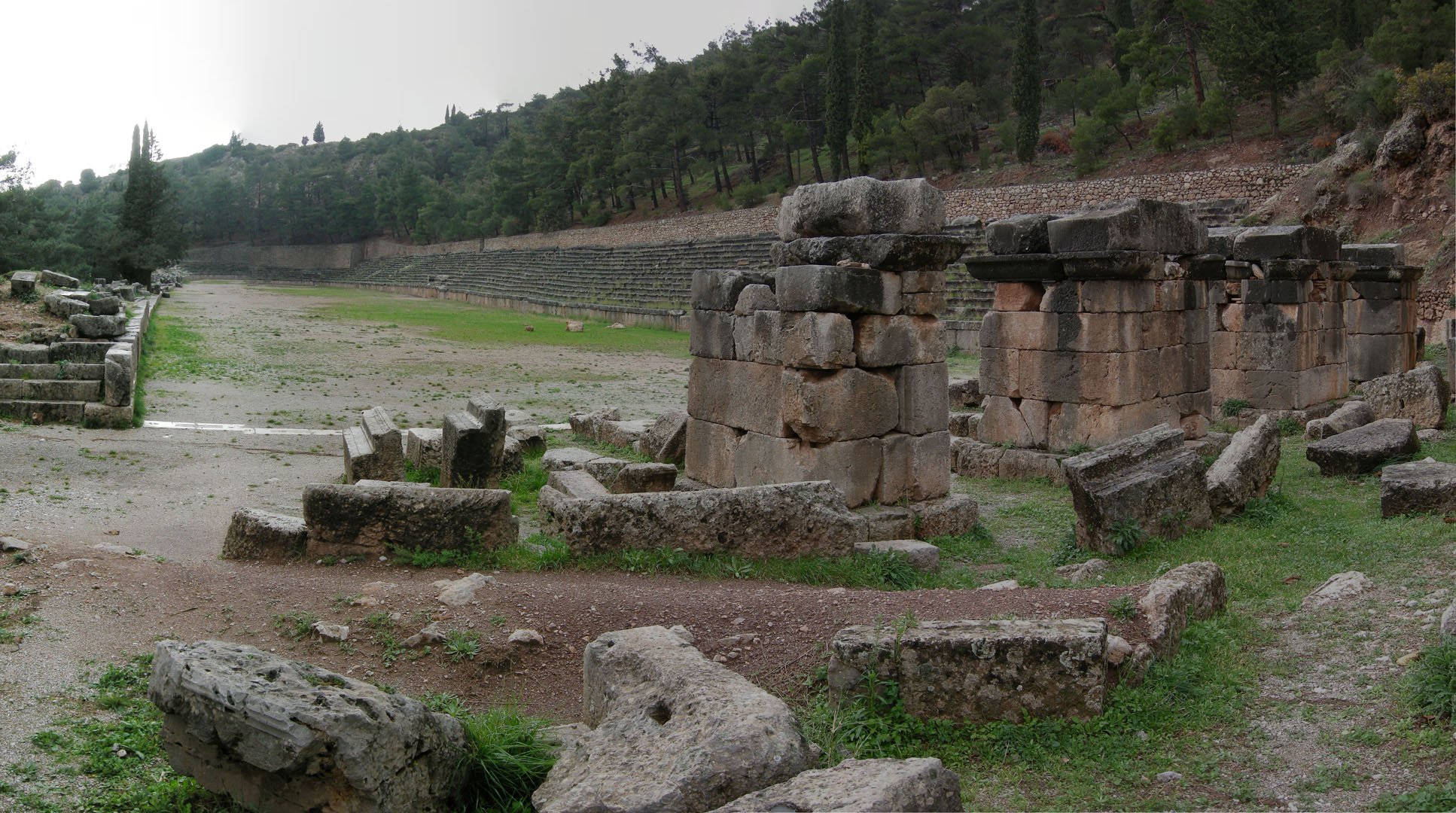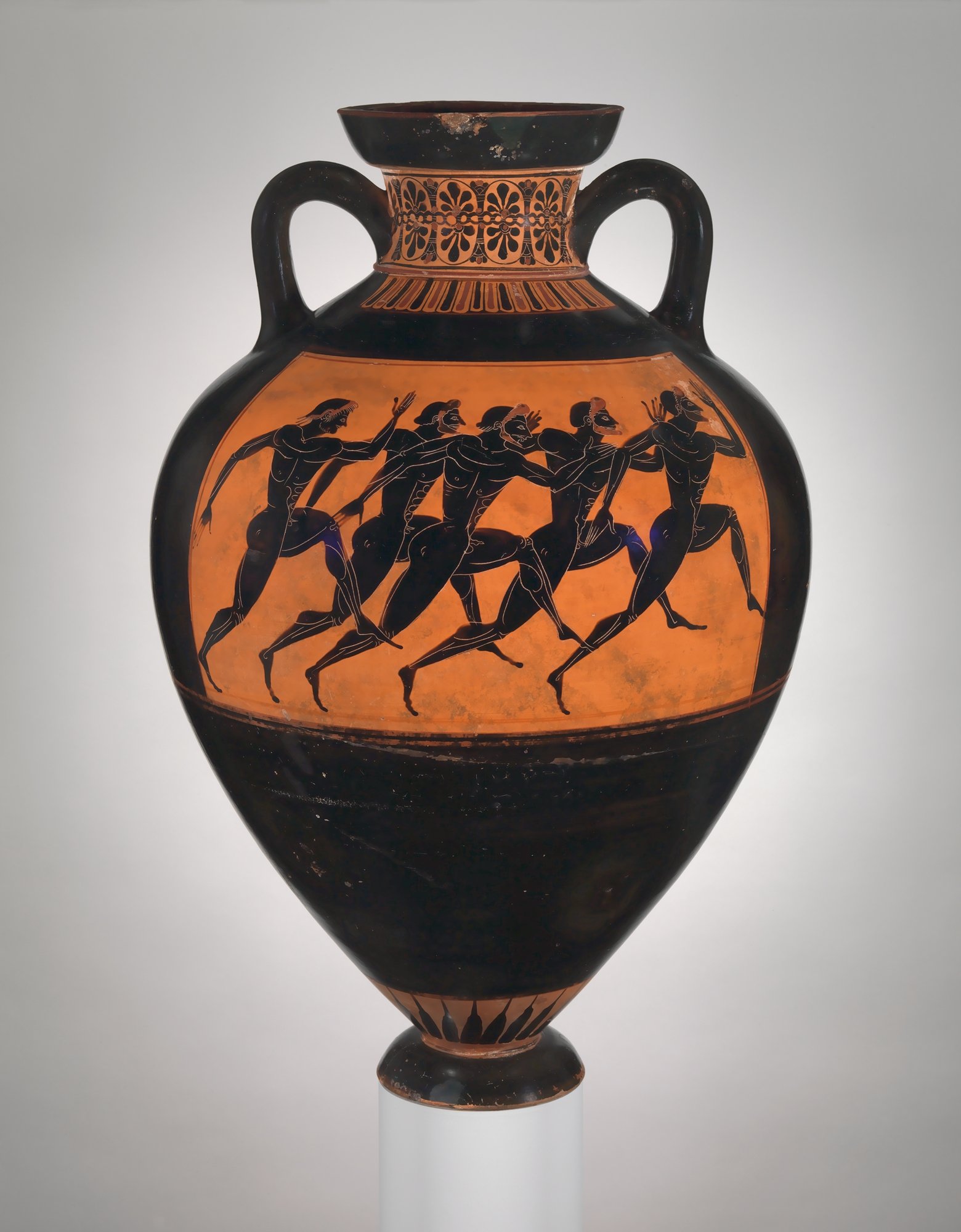
Athletics & Society in Ancient Greece
Spring 2021 on Tuesdays and Thursdays, 3:40-5:00 p.m. EST. Classes begin on January 19.
Above image: Footrace. Terracotta Panathenaic prize amphora, ca. 530 B.C.E., on view at the Metropolitan Museum of Art, gallery 899.
Why were athletic games so important for ancient Greek civilization?
How do the Olympics today reflect this ancient Panhellenic cultural institution?
We invite you to enroll in this online course by Dr. Stamatia Dova offered by Hellenic College.
Course Description
Instructor: Dr. Stamatia Dova
This course offers a comprehensive overview of athletic competitions in Ancient Greece, from the archaic to the Hellenistic period. Through close readings of ancient sources and contemporary theoretical literature on sports and society, the course will explore the significance of athletics for ancient Greek civilization. Special emphasis will be placed on the Olympics as a Panhellenic cultural institution and on their reception in modern times.
Terracotta amphora (jar), from The Metropolitan Museum of Art
An athlete carrying off his prize, a bronze tripod. Terracotta amphora, Attic, ca. 550 B.C.E, on view at the Metropolitan Museum of Art, Gallery 155.
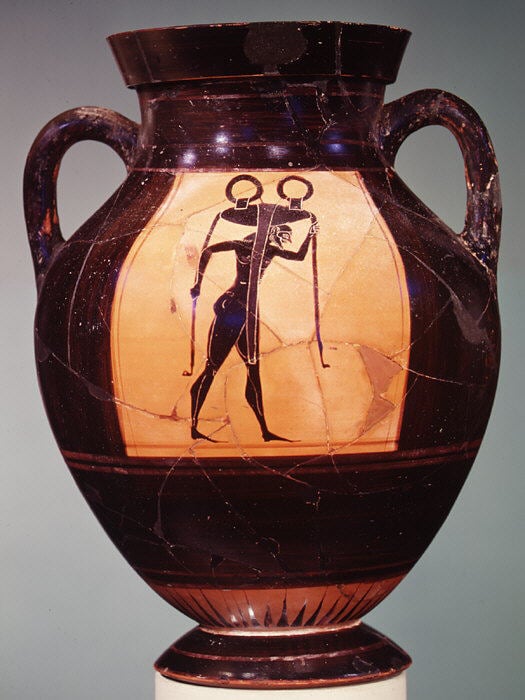
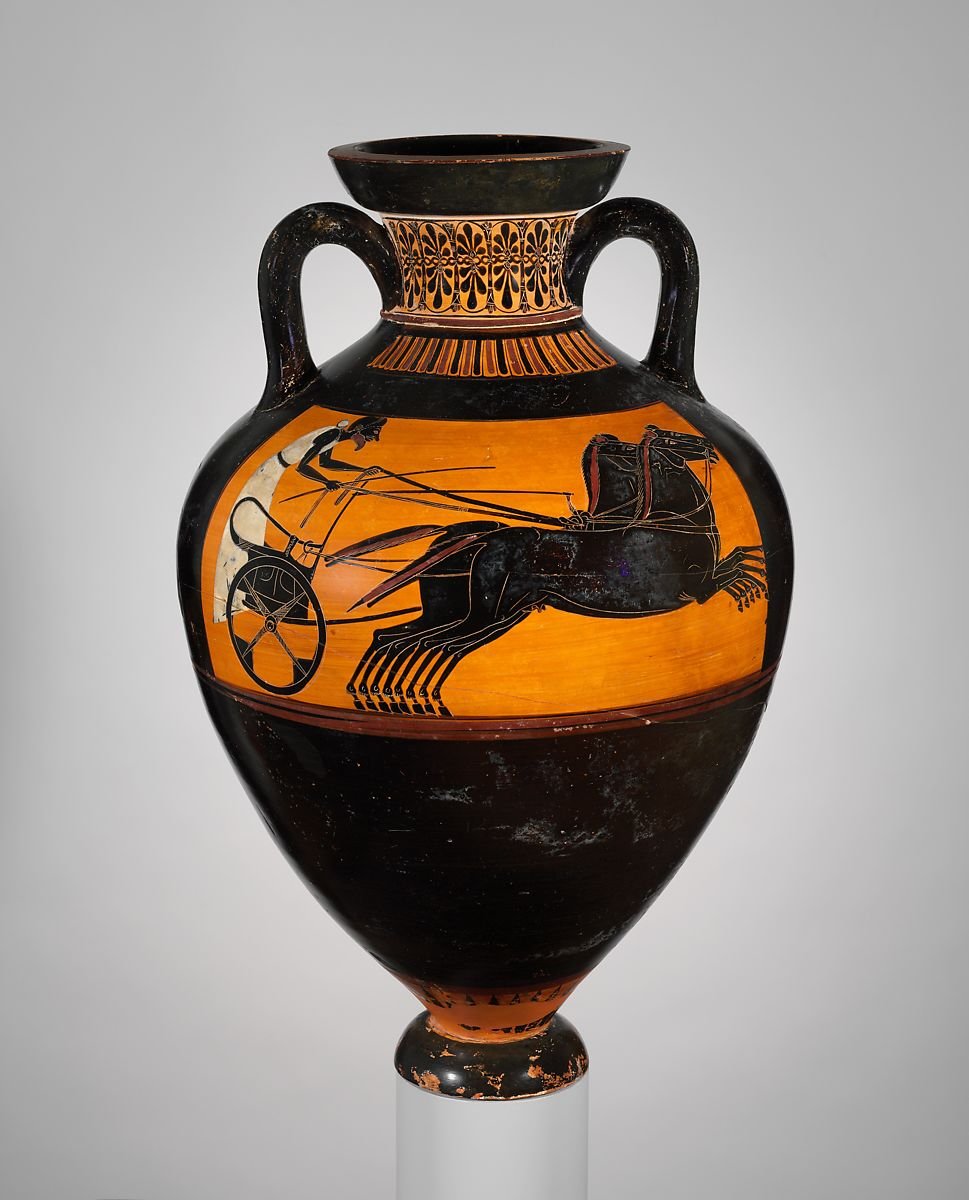
Chariot Race
Terracotta Panathenaic prize amphora ca. 520 BC
From the second quarter of the sixth century B.C. on, victors in the contests for the Panathenaic festival in Athens were awarded a standardized vase containing about forty-two quarts of olive oil from sacred olive groves in Attica. As depicted, this prize vase was given to the victor in the prestigious chariot race.
On view at The Met Fifth Avenue in Gallery 171Course Objectives
- acquire a comprehensive understanding of ancient Greek athletics from the eighth to the second century BC,
- develop a deep appreciation for the ways in which ancient Greek mythology, literature, and culture emphasized the social significance of sport, and
- identify and analyze the ancient Greek roots of modern athletics.
Delphi Ancient Stadium
Perhaps the best-preserved extant ancient stadium in Greece, it overlooks the sanctuary of Apollo. It likely dates to the second half of the 4th-century B.C.E.
Luarvick, CC BY-SA 3.0 via Wikimedia Commons
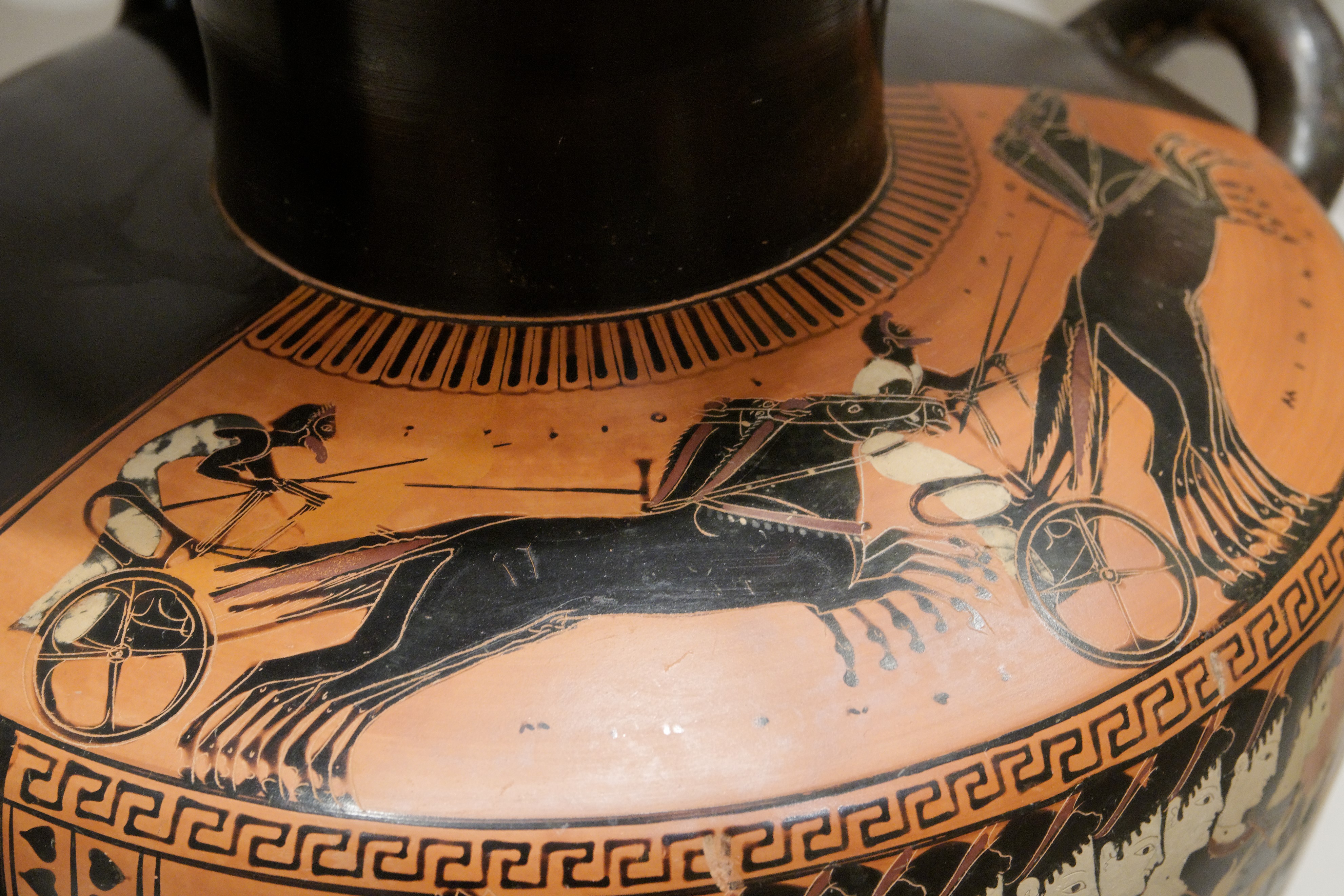
Chariot Race
Shoulder of an attic black-figure hydria, c. 510 B.C.E.
Attributed to the Priam Painter Metropolitan Museum of Art L.1999.10.12
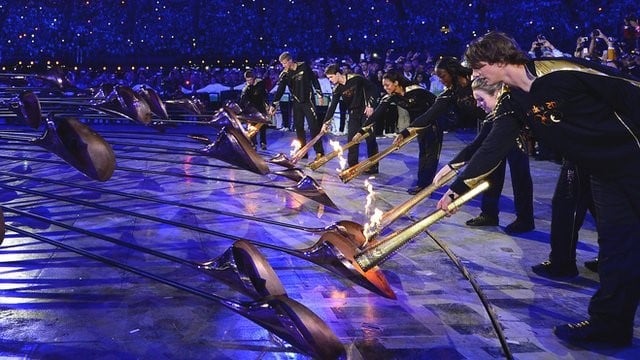
Lighting the Olympic Flame London 2012
Young athletes light the Olympic flame received from Olympian gold medalist rower Sir Steven Redgrave in London, U.K., 2012.
BBC website 28 July 2012, "NI teenager lights Olympic cauldron."

